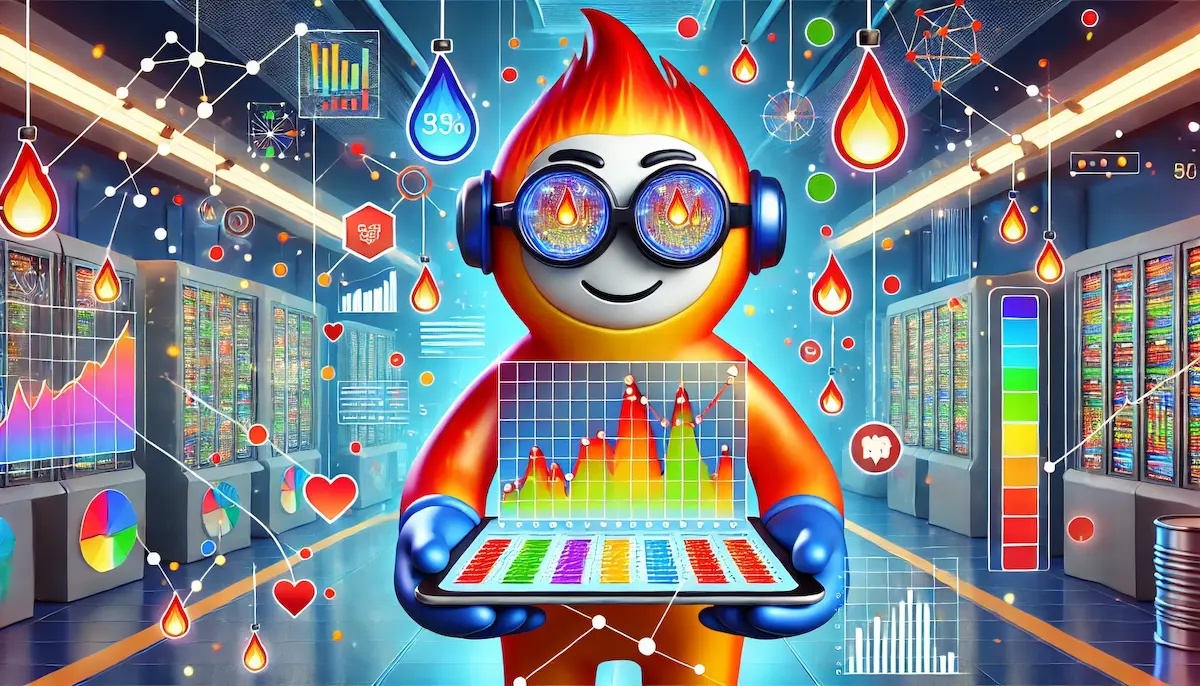Heatmap analysis is a data visualization technique that uses color to represent the intensity of data points in a given area. It is widely used to analyze and interpret complex data sets, providing clear and immediate insights into patterns, trends, and behaviors.
What is a Heatmap?
A heatmap is a graphical representation of data where individual values are represented as colors. The intensity of the color corresponds to the magnitude of the data point, making it easy to visualize areas of high and low activity or value.
Types of Heatmaps
Webpage Heatmaps
Webpage heatmaps are used in user experience (UX) design and digital marketing to analyze user behavior on websites. They show where users click, scroll, and move their mouse, helping to identify popular and ignored areas of a webpage.
Geographical Heatmaps
Geographical heatmaps display data over a geographic area, such as a map. They are commonly used in fields like epidemiology, urban planning, and logistics to show patterns like disease outbreaks, traffic congestion, or delivery routes.
Data Heatmaps
Data heatmaps are used in data analysis to represent complex data sets in a simplified visual format. They are often used in fields like finance, biology, and social sciences to show correlations, distributions, and trends in data matrices.
Applications of Heatmap Analysis
User Experience (UX) Design
Heatmap analysis is extensively used in UX design to improve website and app interfaces. By visualizing user interactions, designers can identify which elements attract attention and which are overlooked. This helps in optimizing layouts, enhancing navigation, and improving overall user satisfaction.
Digital Marketing
In digital marketing, heatmaps provide insights into user engagement and behavior on landing pages and marketing campaigns. Marketers can see which areas of a page get the most clicks, helping them to optimize content placement, call-to-action (CTA) buttons, and ad placements for better conversion rates.
Healthcare and Epidemiology
Geographical heatmaps are vital in healthcare and epidemiology for tracking disease outbreaks and patterns. They help public health officials identify hotspots of disease transmission and allocate resources effectively to contain and manage outbreaks.
Retail and E-commerce
Retailers use heatmaps to analyze in-store customer behavior and e-commerce site interactions. By understanding where customers spend the most time and what products they engage with, retailers can optimize store layouts and online product placements to boost sales.
Finance and Economics
In finance, heatmaps are used to visualize complex data sets such as stock performance, market trends, and economic indicators. They help analysts quickly identify patterns, correlations, and outliers, facilitating informed decision-making.
Sports Analytics
Sports analysts use heatmaps to study player movements and game strategies. By visualizing areas of high activity on the field, coaches can develop tactics, improve player positioning, and enhance overall team performance.
Benefits of Heatmap Analysis
Intuitive Visualization
Heatmaps provide an intuitive way to visualize complex data sets, making it easier to identify patterns, trends, and anomalies at a glance.
Enhanced Decision-Making
By offering clear insights into data, heatmaps facilitate informed decision-making. Whether optimizing a website, planning a marketing campaign, or managing a public health crisis, heatmap analysis helps identify key areas for action.
Improved User Experience
In UX design, heatmaps help identify usability issues and areas for improvement, leading to more user-friendly interfaces and enhanced user satisfaction.
Increased Conversion Rates
In digital marketing and e-commerce, heatmaps reveal user engagement patterns, helping marketers optimize content placement and design to increase conversion rates and sales.
Challenges of Heatmap Analysis
Data Interpretation
Interpreting heatmap data requires expertise and an understanding of the underlying context. Misinterpretation can lead to incorrect conclusions and decisions.
Limited Granularity
Heatmaps provide a high-level overview but may lack the granularity needed for detailed analysis. Complementary data analysis techniques may be required for deeper insights.
Technical Implementation
Creating accurate and effective heatmaps requires technical skills and appropriate tools. Ensuring data accuracy and proper visualization can be challenging.
Privacy Concerns
Collecting and analyzing user interaction data can raise privacy concerns. It is essential to ensure compliance with privacy regulations and obtain user consent when necessary.
Future of Heatmap Analysis
The future of heatmap analysis looks promising, with advancements in technology driving more sophisticated and precise visualizations. Integration with artificial intelligence (AI) and machine learning (ML) will enhance the analysis of large and complex data sets, providing even deeper insights. As data collection and processing capabilities improve, heatmap analysis will continue to evolve, offering more powerful tools for understanding and optimizing various aspects of human behavior and interaction.
Blockfine thanks you for reading and hopes you found this article helpful.
